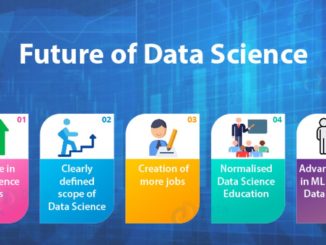
“Evolution is a fairy tale for grown-ups,” says Professor Louis Bouroune, president of the Biological Society of Strasbourg, director of the Strasbourg Zoological Museum, and Director of the French National Center of Science Research. In other words, belief in evolution requires one to toss rationality out the window.
The “theory of evolution” formulated by Charles Darwin is based on faulty observations and data. There is actually much evidence that contradicts this teaching. In fact, evolution isn’t really a theory, a law, or even science. Theories can be tested. Scientific law is proven and provable by experimentation; not so with evolution. As we will see, evolution is closer to blind wishful thinking than science.
Consider an illustration:
A man was conversing with is new neighbor in his garage. The man asks, “Have I told you about my watch?” The neighbor responds, “No. What’s the story?” “One day, I was here in the garage looking for a flashlight. My daughter left her roller-skates out, and I slipped into the toolbox. Springs and screw flew everywhere! When I regained consciousness, I looked over at the mess, and all that stuff had come together to make this watch.”
In this scenario, a complicated machine (the watch) was assembled by random accident. Evolution happens in the same way. According to Darwinians, all life on earth began with “primordial ooze” or mud being stuck with lightning or some other source of energy, causing the construction of the chemical building blocks of life. Over the course of billions of years, these components somehow became single-celled organisms, which eventually evolved into every living thing on earth through random mutations.
Unfortunately for evolutionists, scientific law cannot allow this to take place. The second law of thermodynamics states that natural processes progress in a direction that increases total entropy (disorder) in the universe. In nature, nothing becomes more orderly or complex in structure than that from which it came. Nothing can create something more complex than itself.
Many people assume that the main proof for evolution is in the fossil record. We often hear reports of discoveries of new species. Dinosaur skeletons, “ape-men,” and other finds seem to prove that evolution occurs. The scientific-sounding explanations of experts make the arguments appear even stronger.
The fossil record also stands against evolution. There are no fossils of animals in phases of transition. The “new” species just appear. For example, there are no fossils showing the development of wings to link reptiles and birds.
It is said that man’s earliest ancestor is a species identified by a skeleton known as “Lucy.” It is not commonly known, but in most biological circles, Lucy is considered to be a chimpanzee (1). Neanderthals have been found to be “anatomically correct humans who were pathologically altered by iodine-deficiency diseases,” (2, 3). Articles published in Science magazine in 1996 admitted that Neanderthals, Cro-Magnon man and modern man lived during the same period of time (4, 5). Also, not enough fossils exist to support the notion that earth was inhabited by various life forms for hundreds of millions of years.
The effectiveness of carbon 14-dating has been called into question. In just on instance, the blood of a seal that had just been killed in Antarctica was tested. It indicated that the seal had been dead for 1,300 years (6).
There are many reasons to reject the claims of evolution besides the ones we’ve briefly gone over in this essay. Seeing that there is no clear scientific or rational reason to accept Darwin’s theories as fact, those who deny the truth choose to “believe” evolution. British physicist H.S. Lipton says, “Evolution became in a sense a scientific religion; almost all scientists have accepted it and many are prepared to ‘bend’ their observations to fit in with it.” Rather than believe in a Creator Who made humans and the rest of the universe with a purpose, they make time and random chance their creators. To believe in something which cannot be seen, proven, or even tested will be considered by many as religious faith.
Sources:
1) Science News, col. 123, Feb. 5, 1983, pg. 89
2) John Noble Wilford, New York Times, Dec. 1, 1999
3) Guy Gugliotta, Washington Post, May 24, 1999
4) Science, vol. 276, May 30: 1331 & 1392, and Science, vol. 274, Dec.
13, 1996: 1841 & 1870
5) Science, vol. 274, Dec. 13, 1996: 1873-1873
6) W. Dort Jr., Ph.D., Antarctic Journal of the United States,
Sept.-Oct., 1971, pg. 211
Proudly WWW.PONIREVO.COM
Source by Damon Hall



